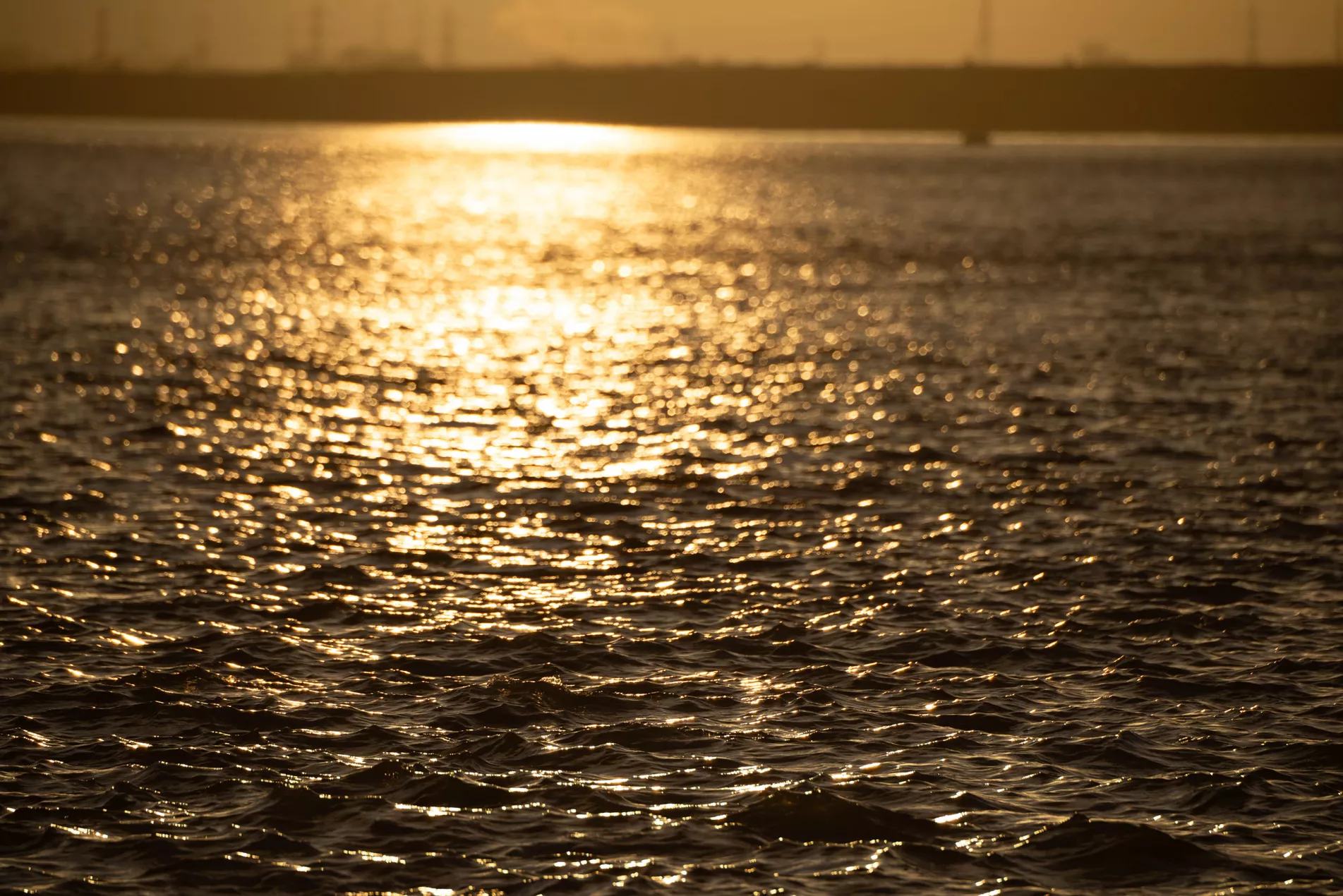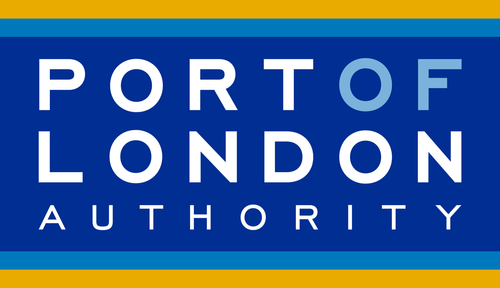Live Tides
NOTICES TO MARINERS
Charts & Surveys
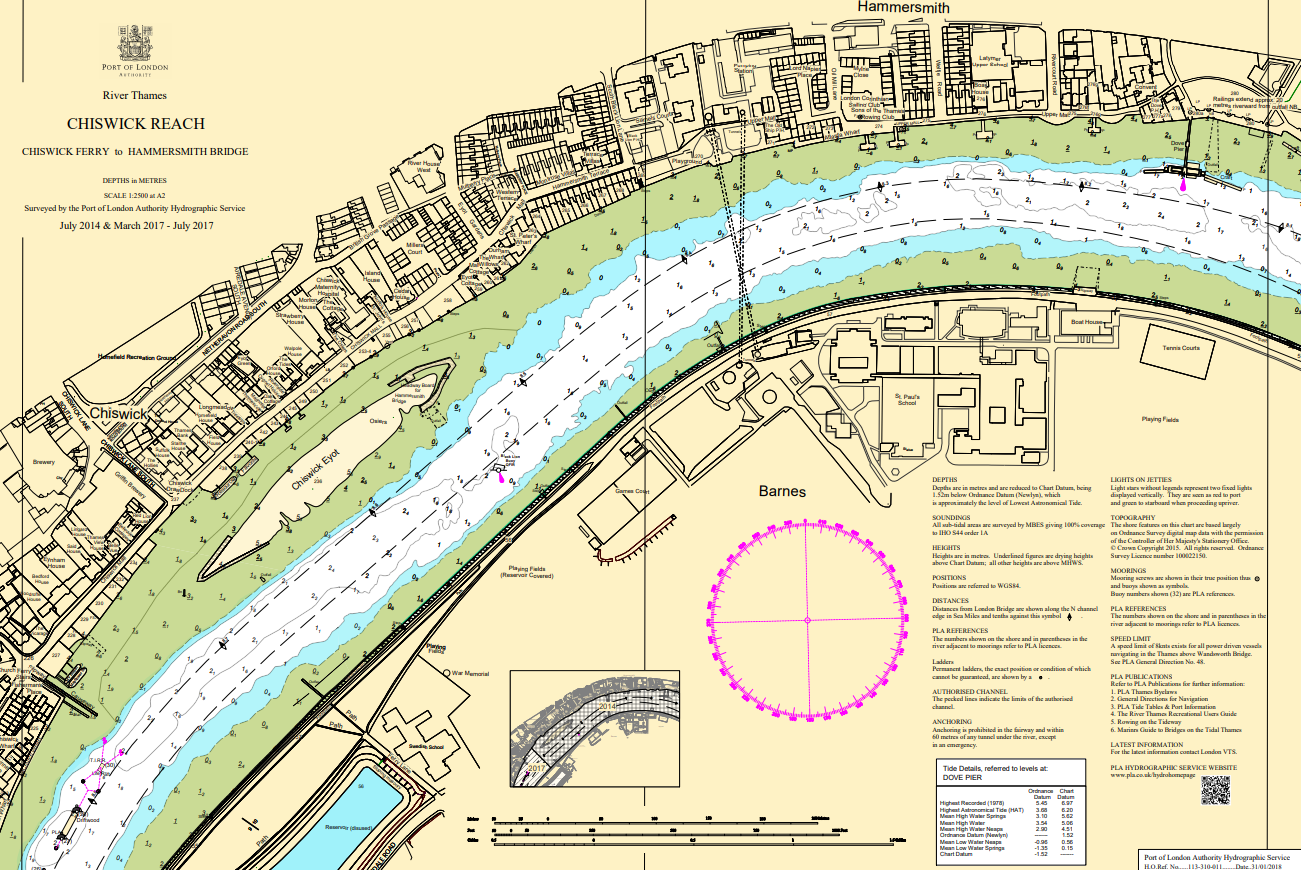
Incident reporting
Life-threatening emergencies on the river:
Call 999 and ask for the Coastguard
For near miss, safety observations and incident reporting click below
Thames foreshore permits
Anyone searching the foreshore in any way for any reason requires permission from the Port of London Authority
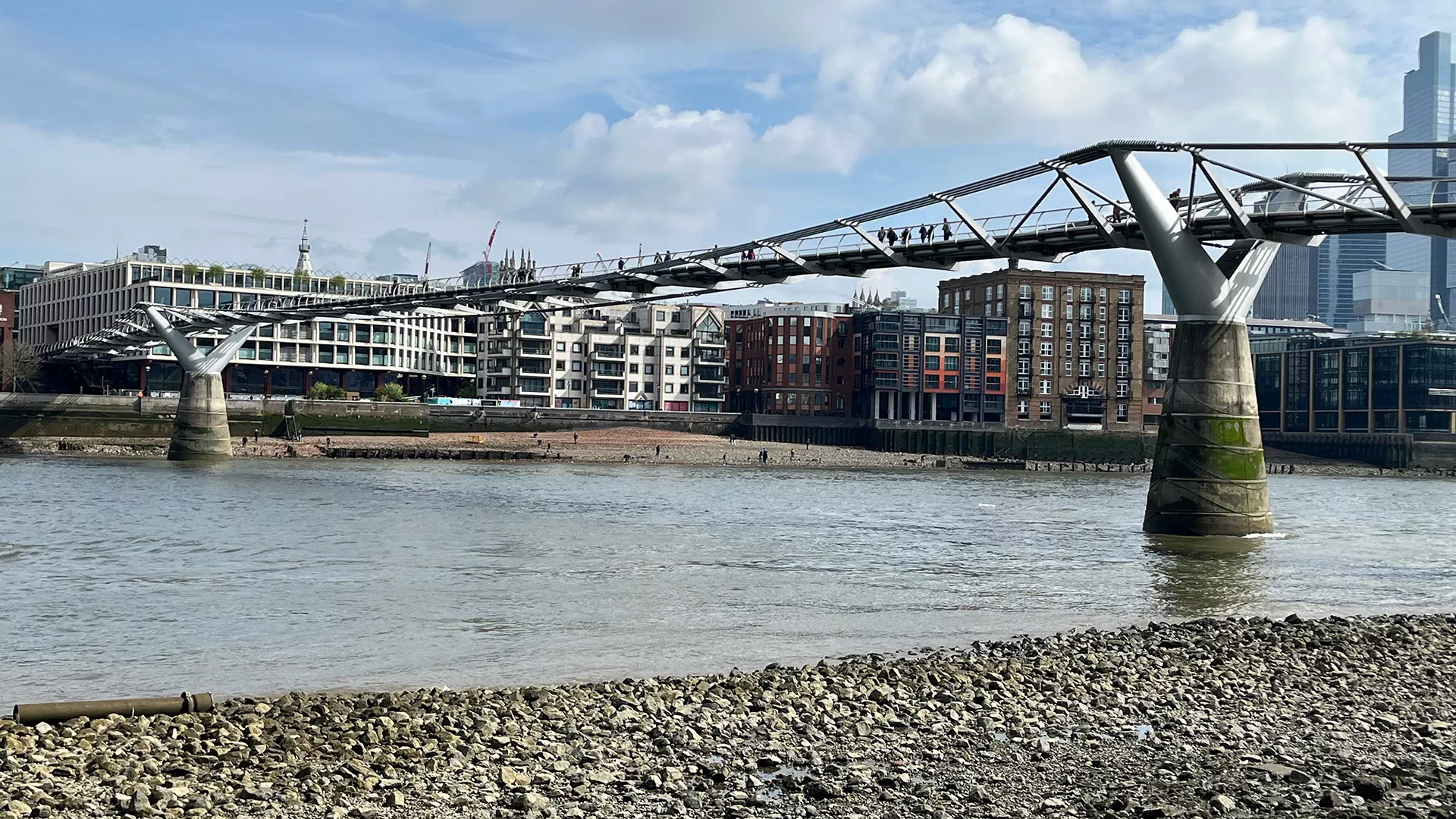
Anyone searching the tidal Thames foreshore from Teddington to the Thames Barrier - in any way for any reason - must hold a current and relevant foreshore permit from the Port of London Authority. This includes all searching, metal detecting, ‘beachcombing’, scraping and digging.
Please ensure that you are considerate of anyone else on the foreshore and residents who may live in close proximity of the river, and keep noise and disturbance to a minimum.
Church Stairs, Rotherhithe
EFFECTIVE IMMEDIATELY
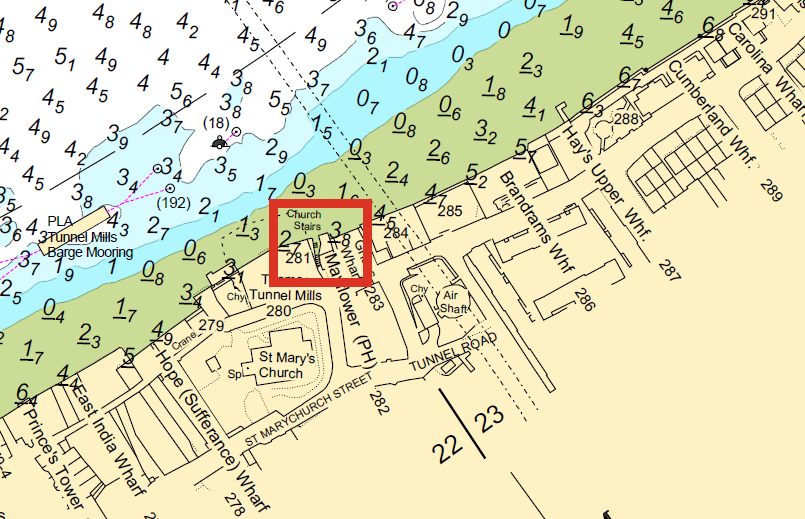
Access to Church Stairs in Rotherhithe from the foreshore has been closed until further notice due to safety concerns.
Anyone on the foreshore in this area will need to plan alternative access and egress points accordingly.
Cannon Street Railway and London Bridge exclusion zone
EFFECTIVE FROM 1 NOVEMBER
The City of London Corporation will be undertaking substantial repairs to the campshed situated between Cannon Street Railway and London Bridge.
This work will involve heavy machinery and means the PLA must close the foreshore to all searching/digging within the area shown on the chart extract from 1 November 2025 for approximately three months.
As the timetable is subject to change, the foreshore will not be reopened until indicated by the PLA.
All entry into this area is strictly prohibited and anyone found searching will have their permits removed.
Frequently Asked Questions
All the foreshore in the UK has an owner. Metal detecting, searching or digging is not a public right and as such it needs the permission of the landowner. The PLA and the Crown Estate are the largest landowners of Thames foreshore and jointly issue a permit, which is administered by the PLA, allowing all searching, metal detecting, ‘beachcombing’, scraping and digging.
There are 4,000 Standard Permits and 30 Creative Permits available.
The foreshore of the river Thames is a sensitive environment and London’s longest archaeological site, with finds dating back to 10,000 BCE. It is also the border to the UK’s biggest port and busiest inland waterway and must be protected and respected by all that use it.
The PLA recognises there is great interest in the history of the river and London. We have limited the number of available foreshore permits to protect the unique nature of the foreshore. The waiting list is intended to ensure that this unique history is available to more people over time while maintaining a limit on the total number of permits in operation.
Due to unexpected levels of demand that left the waiting list at over 10,000, we have suspended registrations of interest and the waiting list. Any changes to this will be published on this page.
If you have registered your interest and are on the waiting list, we will contact you via email when there is an opportunity for you to obtain a permit.
We recommend that you add [email protected] to your safe senders list to ensure that the invitation to apply is not sent to your spam folder.
Each applicant must have a UK address and a unique email address.
The invitation is personal to you. Anyone using the link to obtain a permit is checked against our waiting list to ensure only those who have been invited are using the link.
New permits will be valid for one year from the date of issue.
You must be over the age of 12 to hold a foreshore permit due to the potentially hazardous nature of the foreshore.
Any permit holder under 16 must be accompanied by a permit holding adult whilst searching the foreshore.
There will be no automatic renewal of permits.
This is to ensure that all those who are interested get the opportunity to have a permit. You will need to re-register your interest in a new permit no more than one month before your existing permit expires.
We knew that there would be considerable interest in the new foreshore permits but were surprised by the high volume of applications, meaning we had to cap the waiting list at 10,000. Unfortunately, it may take a considerable time for people lower down on the list to secure a new permit. Recognising the concerns this raised that the loss of a core of experienced permit holders would be to the detriment of the study of London’s archaeology, and having consulted colleagues from the Museum of London and Historic England, the PLA is inviting applications for a limited number of renewable, annual standard permits.
To secure one of the limited number of permit renewals, you must be able to demonstrate through the submission of evidence to [email protected] that you exceed the following minimum criteria:
Possession of a permit for a minimum of four years:
A substantive and recorded history of reporting finds to the PAS: and
A substantive and recorded history of contributing to the educational, cultural and historic life of London.
You are eligible to apply for this if you held a permit that expired since the change of rules on 2 October 2024 or if your current permit has less than four months to run.
Subsequent renewals will only be permitted on the basis that the holder continues to record finds and contribute to the educational, cultural and historic life of London and the tests will continue to be applied.
The PLA acknowledge that those new to searching the foreshore may also want to be part of this scheme, so applications from those who do not satisfy the first criterion will be considered, but the evidence for the second and third must be substantial.
Please note that the PLA’s decision on any application is final.
Log into the system and go to the “Your membership” menu, the select “Additional membership”. You will then be able to sign up for a new Standard Permit.
Please note that this sign up will be subject to the same approval by the PLA as described for others.
A Creative Permit allows the holder to use finds of no inherent monetary or historical value to create artworks or other crafts whether for sale, exhibition or for personal enjoyment.
Applications for a Creative Permit should be submitted to [email protected]. All applications must include an explanation of the creative way that finds are to be used, such as photographs of previous works, details of sales or exhibitions you have submitted items to, or any other information available about what you have previously done and how you intend to use the permit should it be granted.
Creative Permits are only available to over 18’s and are limited to a total of 30 permits.
Your permit will continue to be valid until its expiry. If you wish to have another permit, you will need to register your interest and wait for the next available opportunity to obtain another permit no more than one month before the expiry of your current permit.
While you may visit the foreshore, you may not search the tidal Thames foreshore in any way or for any reason. This includes all searching, metal detecting, ‘beachcombing’, scraping and digging.
The Thames foreshore is a potentially hazardous environment which must be respected; it contains many dangers that may not always be immediately apparent. The Thames can rise and fall by over seven metres twice a day as the tide comes in and out. The current is fast and the water is cold.
Anyone accessing the foreshore does so entirely at their own risk. Individuals must take personal responsibility for their own safety and that of anyone with them.
In addition to the tide and current, other less obvious hazards can be encountered, including raw sewage, broken glass, hypodermic needles and wash from vessels. Steps and stairs down to the foreshore can be slippery, dangerous and are not always maintained. Caution must be exercised when accessing or leaving the foreshore.
Before going onto the foreshore, always consider:
- Wearing sensible footwear and gloves.
- Carrying a mobile phone.
- Visiting with others.
- The state of the tide; is it rising or falling? Details of tide times is available from the PLA website and the PLA app.
- You may need to get off the foreshore quickly – watch the tide and keep steps or stairs close by.
- Finally, be aware of the possibility of Weil’s Disease, which is spread by rat urine in the water. Infection is usually through cuts in the skin or through eyes, mouth or nose. Medical advice should be sought immediately if ill effects are experienced after visiting the foreshore, particularly ‘flu like’ symptoms including a temperature and aching in the muscles and joints.
Magnet fishing in the tidal Thames is not allowed, even with a foreshore permit. This is because of potential hazards to navigation, the environment and the safety of individuals involved and other river users.
Anyone wishing to organise a group activity such as a walk or guided tour which does not involve any disturbance of the Thames foreshore must first apply for written permission from the Port of London Authority via [email protected].
If the group activity involves any disturbance of the foreshore, this needs to be specified in the application.
Anyone involved in mudlarking must have their own permit.
However, individuals do not need a permit to visit the foreshore as long as they are not searching in any way or for any reason. This includes all searching, metal detecting, ‘beachcombing’, scraping and digging.
Yes, but please note: we do not issue permits to children younger than 12 and each applicant must have a unique email address.
Under 16’s on the foreshore should always be supervised by a parent or guardian.
Tide tables and current tide levels are available on our website or on our mobile website.
Metal detectors may be used in conjunction with a valid foreshore permit if the permit holder observes the parameters of the standard permit.
Foreshore mapping tool
Permits issued by the PLA are only valid for certain locations west of the Thames Barrier upstream to Richmond Lock. They are not valid east of the Thames Barrier and no searching/digging is allowed on the foreshore of the River Thames east of this point.
A GIS-based map of where Standard Permit holders may search the foreshore -- including all relevant restrictions listed in the Terms and Conditions associated with the Standard Permit -- is available below (details of the restrictions are available from the ‘Legend’ tab).
Documents
There are 4,000 annual foreshore permits live at any one time. As the wait list for permits has now surpassed 10,000, we are temporarily pausing the acceptance of new applications. We will reopen the application in due course.
Discover
